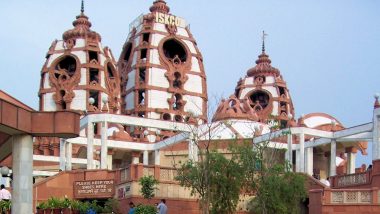Janmashtami, also popularly known as Krishna Janmashtami or Gokulashtami, is an annual Hindu festival that celebrates the birth of Krishna. Lord Krishna is the the eighth avatar of Vishnu. The auspicious festival of Janmashtami is observed according to Hindu luni-solar calendar, on the eighth day (Ashtami) of the Krishna Paksha (dark fortnight) in Shraavana of the lunar Hindu Calendar which falls either in August and September of the Gregorian calendar. Janmashtami 2019 will be celebrated across the nation on August 23 while Dahi Handi will be celebrated on Saturday, August 24, 2019, a day after Krishna Janmashtami. Krishna Janmashtami 2019: From Hari to Govinda, Know These 108 Names of Kanha With Meaning in Hindi & English.
On this day, devotees celebrate Janmashtami by fasting, singing, praying together, preparing and sharing special food, night vigils and visiting Krishna or Vishnu temples. Krishna temples across the nation organize recitation of Bhagavata Purana and Bhagavad Gita while several communities organize dance-drama events called Rasa Lila or Krishna Lila. The tradition of Rasa Lila is particularly popular in Mathura region. It is acted out by numerous teams of amateur artists, cheered on by their local communities, and these drama-dance plays begin a few days before each Janmashtami. Krishna Janmashtami 2019 Festival Date: Significance, Gokulashtami Puja Tithi and Celebrations Associated With Lord Krishna's Birthday.
On this Krishna Janmashtami, here are five Krishna temples in India that you should visit:
Bankey Bihari Temple in Mathura, Uttar Pradesh
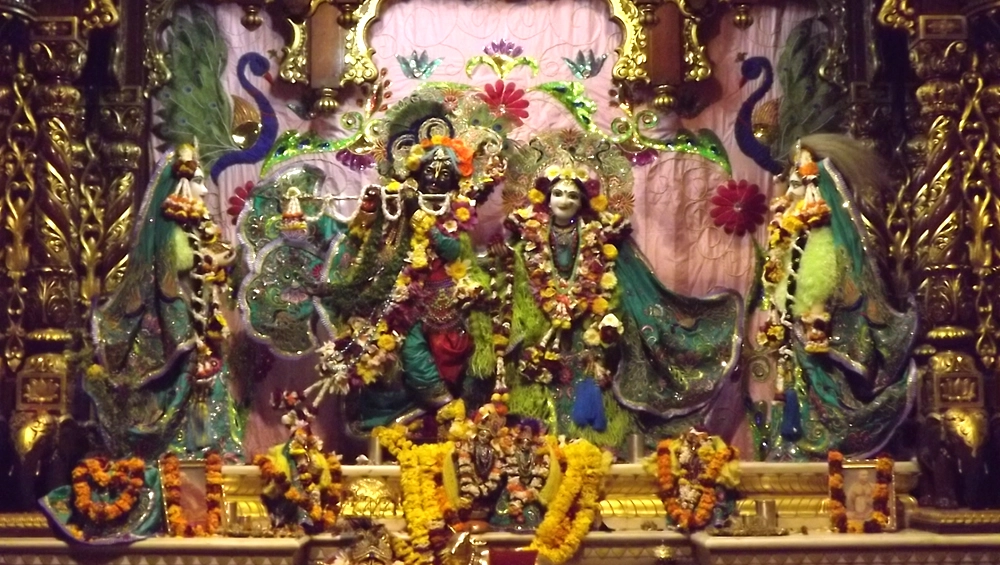
Shri Bankey Bihari Mandir is dedicated to Lord Krishna and is located in the holy city of Vrindavan in the Mathura district of Uttar Pradesh. Bankey Bihari Ji was originally worshipped at Nidhivana. Bankey means "bent in three places" and Bihari means "supreme enjoyer." In the temple, the image of Lord Krishna stands in the Tribhanga posture. Haridas Swami originally worshipped this devotional image under the name of Kunj-Bihari, which means the enjoyer of lakes. 10 Quotes & Timeless Lessons Given by Lord Krishna From the Bhagavad Gita.
Bankey Bihari Temple was established by Swami Haridas (Lalita Sakhi in Dvapara Yuga), a guru of the famous singer Tansen. The grand temple, situated near Shri RadhaVallabh Temple, is among the 7 temples of Thakur of Vrindavan including Shri Radha Vallabh Ji, Shri Govind Dev Ji, Shri Radha Raman Ji, Shri Radha Madhav Ji, Shri Madan Mohan Ji and Shri Gopinath Ji.
Dwarkadhish Temple in Gujarat
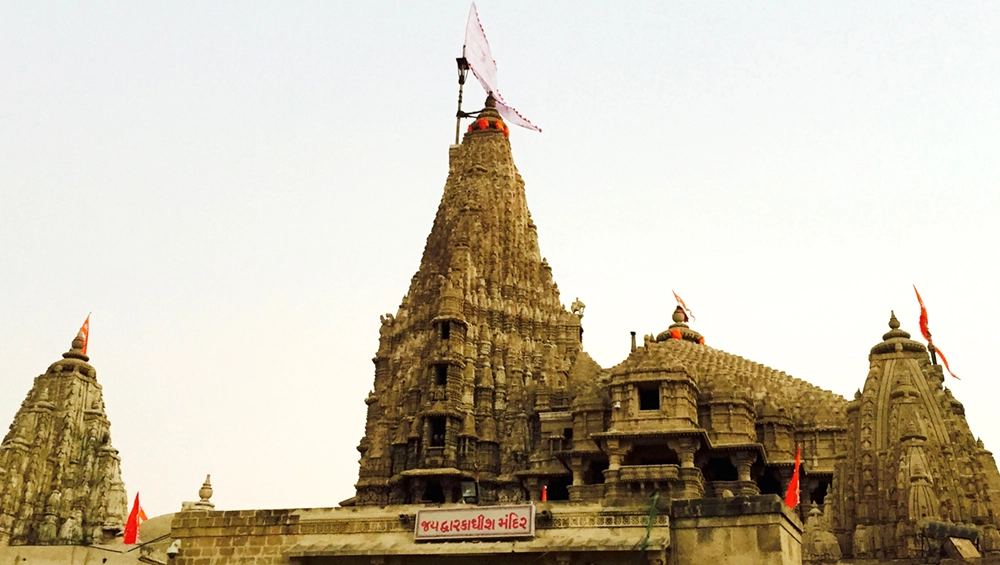
The Dwarkadhish temple, also known as the Jagat Mandir is a Hindu temple dedicated to Lord Krishna. The temple is located at Dwarka in Gujarat. According to tradition, the original temple was believed to have been built by Krishna's grandson, Vajranabha. The original structure was destroyed by Mahmud Begada in 1472, and subsequently rebuilt in the 15th-16th century. The temple became part of the Char Dham pilgrimage considered sacred by Hindus in India.
Lord Krishna is worshiped in the temple by the name Dwarkadhish, or 'King of Dwarka'. The town of Dwarka in Gujarat has a history that dates back centuries, and mentioned in the Mahabharat epic as the Dwaraka Kingdom. Archaeological findings suggest it to be 2,000 - 2,200 years old as it is believed to be built in the 15th- 16th century.
According to history, the Dwarkadhish Temple is a Pushtimarg temple, hence it follows the guidelines and rituals created by Vallabhacharya and Vitheleshnath. The main shrine of the five storied building, supported by 72 pillars, is known as Jagat Mandir or Nija Mandir.
Khunya Muralidhar Temple in Pune, Maharashtra
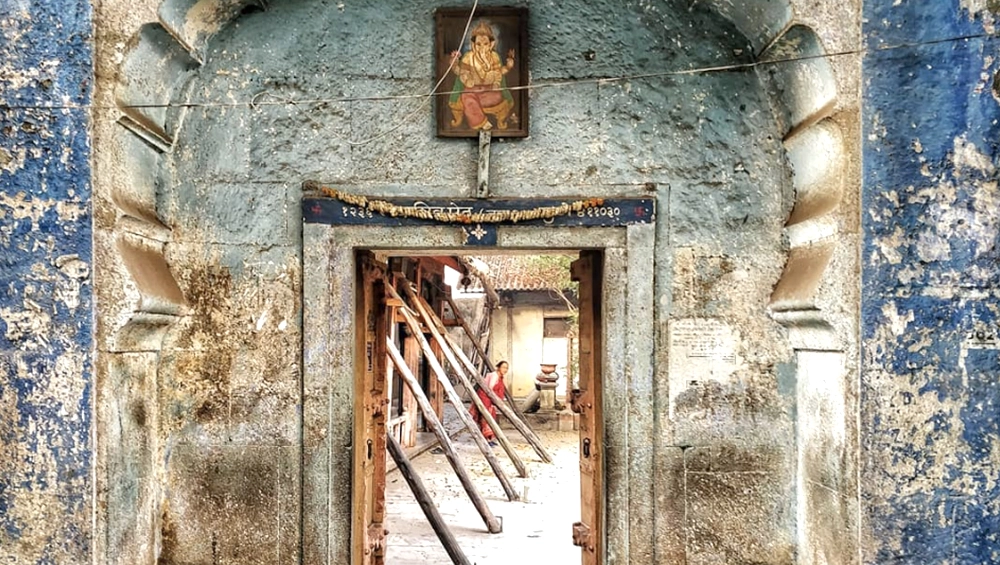
The Khunya Muralidhar Temple is a Hindu temple dedicated to Lord Krishna. The temple is located at Sadashiv Path near Peru Gate in Pune. The temple has got its name as Muralidhar is another name of Shri Krishna. According to history, the temple was built in 1797 by Sadashiv Raghunath (Dada Gadre). Gadre, dreamt that God had ordered him to construct a temple. Gadre built the temple to the east of his garden in what was then known as Karkolpura.
The Khunya Muralidhar Temple is dedicated to Lord Krishna and the Radhakrishna idol of the temple is created in marble by Bakhatram, a famous Jaipur sculptor.
Guruvayur Temple in Kerala
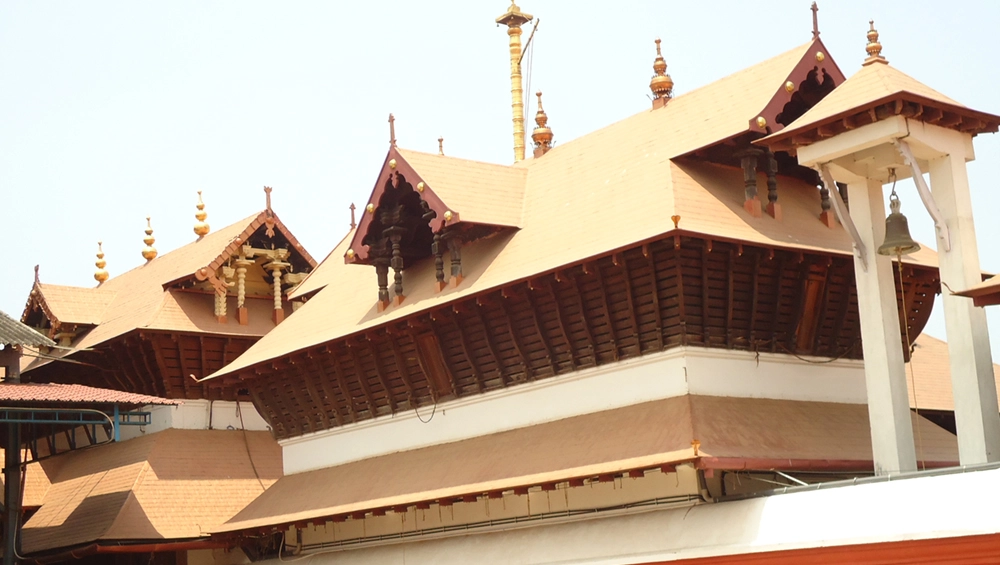
The Guruvayur Sri Krishna Temple is a Hindu temple dedicated to the Hindu God Guruvayurappan, a four-armed affiliation of Lord Vishnu. The temple is located in the town of Guruvayur in Kerala. The temple is one of the most important places of worship for Hindus of Kerala and is often referred to as Bhuloka Vaikunta. The deity in the Guruvayur Temple is Vishnu, which worshipped in the form of his avatar Krishna. The central icon is a four-armed standing Vishnu carrying the conch Panchajanya.
This image represents the majestic form of Vishnu as revealed to Krishna's parents Vasudeva and Devaki around the time of Krishna's birth; this is the reason why Lord is worshipped in his baby form. Also, the temple is called "Dwarka of South India" due to Krishna's widespread presence. Strict dress code exists for people who wish to enter the Guruvayur Temple. Men are to wear mundu around their waist, without any dress covering their chest while women are allowed to wear sari and girls are to wear long skirt and blouses. Presently the dress code for women have been relaxed with shalwar kameez being allowed.
The ISKCON temple in Delhi
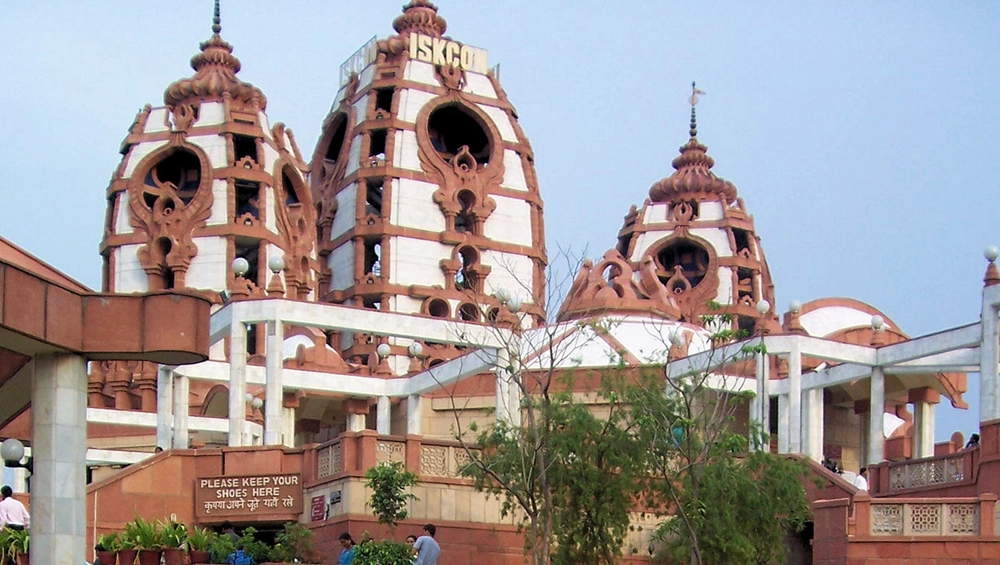
The ISKCON temple, also known as Sri Sri Radha Parthasarathi Mandir, is devoted to Lord Krishna and Radha. The temple houses the idols of Sri Sri Radha Parthasarathi, Sita Rama Laxman Hanuman and Sri Sri Gaura Nitai. The is a significant structure, with 90-foot-high 'shikharas'. The walls of the temple have been decorated with the works of artists from Russia. The temple was constructed in 1993 by Achyut Kanvinde and inaugurated in the year of 1998 by Atal Bihari Vajpayee, the former Prime Minister of India on the occasion of Sri Ram Navami.
The temple is located in the East Kailash region of the capital on the hilltop of Hare Krishna Hills in the national capital. The temple has been an outcome of the popular 'Hare Krishna' movement. The International Society for Krishna Consciousness (ISKCON) follows strict line of worship in the Vaishnava tradition. 24 priests are assigned the task of carrying out essential prayers and services. The deities are dressed twice a day. The daily routine includes six aartis offered to the deities, namely Mangala Aarti, Darshan Aarti, Raj Bhog Aarti, Usthapana Aarti, Sandhya Aarti, and Shyana Aarti. The devotees are offered 'bhoga ka prasad' after the prayers to the deities are completed.
The Hindu festival is celebrated with great enthusiasm and fanfare especially in Mathura and Vrindavan. Janmashtami is widely celebrated by Hindu Vaishnava communities of eastern and northeastern India. Major Vaishnava and non-sectarian communities in Manipur, Assam, West Bengal, Odisha, Madhya Pradesh, Rajasthan, Gujarat, Maharashtra, Karnataka, Kerala, Tamil Nadu, Andhra Pradesh and all other states of India.
(The above story first appeared on LatestLY on Aug 21, 2019 07:00 PM IST. For more news and updates on politics, world, sports, entertainment and lifestyle, log on to our website latestly.com).




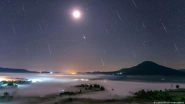

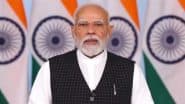
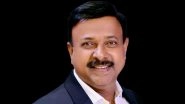
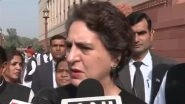




 Quickly
Quickly








